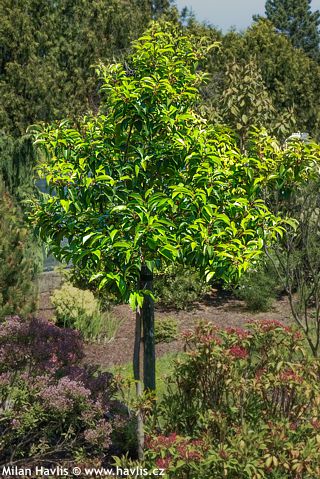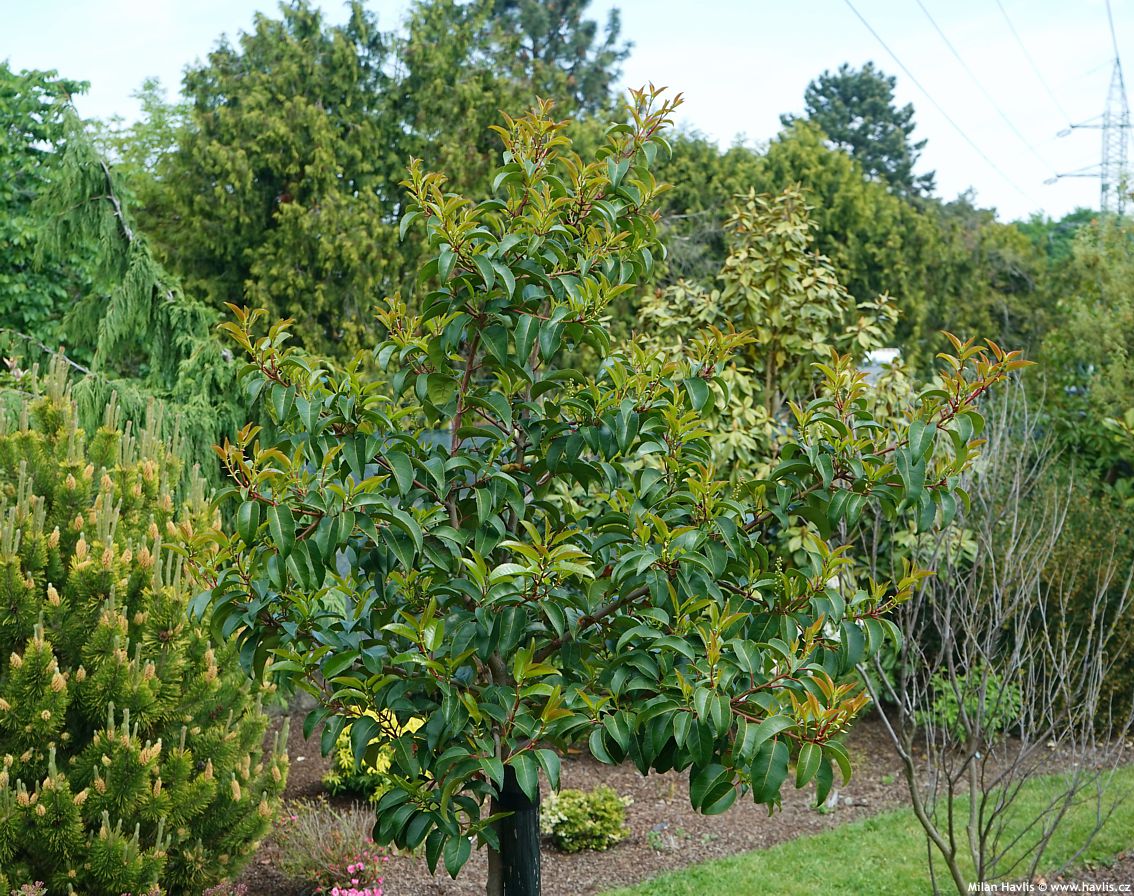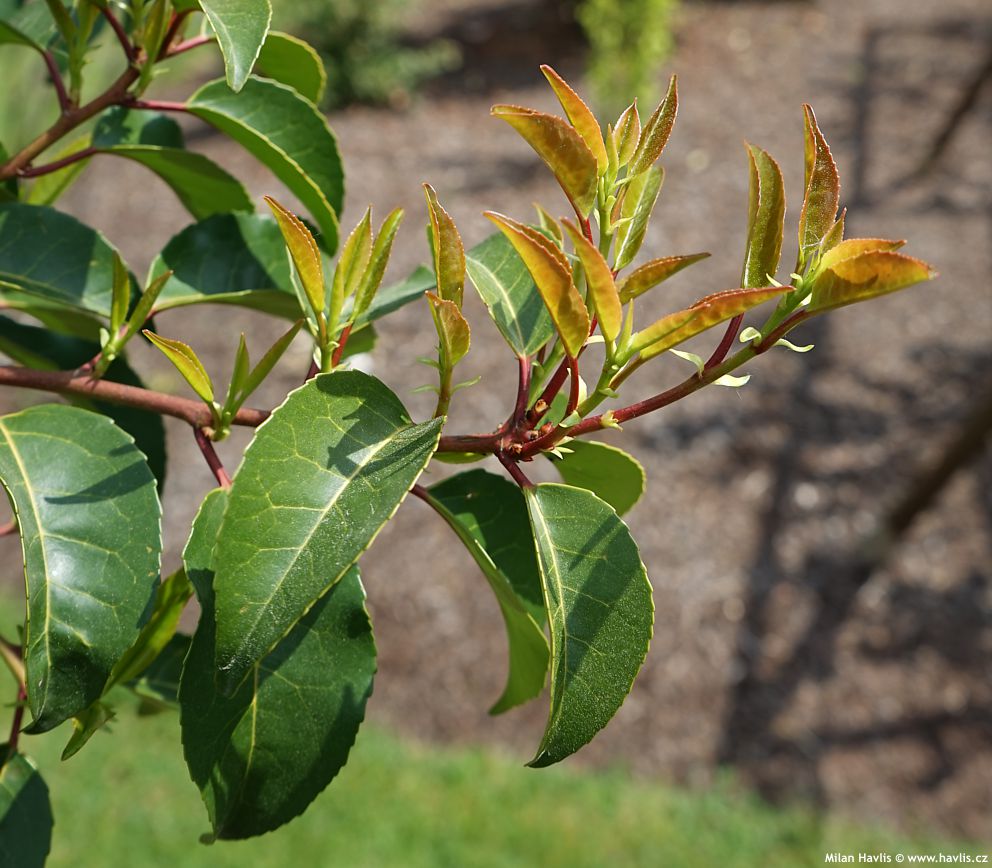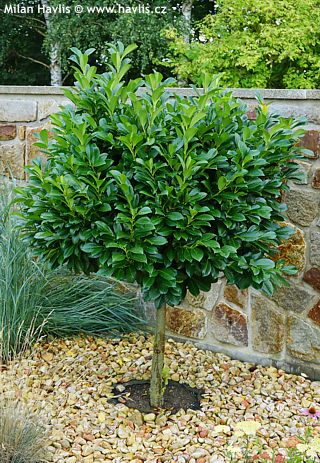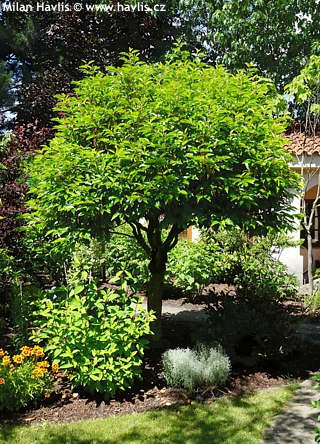Prunus lusitanica 'Ybrazo1' TICO® Portugal laurel - STANDARD TREE
size/type
small tree,small tree
usual height
2-4m
usual width
2-3m
leaves
evergreen broadleaf
colour of leaves
flowers
showy
colour of flowers
blooming time
May-June
location
full sun
soil type
acidic (peaty)
soil moisture requirements
evenly moist but well-drained
USDA zone (lowest)
7 (down to -23°C)
winter protection
for zone 5+6

for zone 7

categorized
Prunus
I have been a fan of evergreen trees for a long time and I am not afraid to admit that hunting for them has become my life's passion. The proverb ‘appetite comes with eating’ is absolutely correct, though it carries a risk that one day I might get to the point where there will be nothing left to discover, or that it won’t be so different from what has already been discovered. Realizing that makes me treat each new finding as a princess and when it proves its value I spare no superlatives when describing it. Still, I remain sober in my judgments and praise only what I am sure of. This time I'm so excited that I can’t help hopping my fingertips on the keyboard so fast that they often get mixed up. Why? Because toady I have possibly the most beautiful evergreen and hardy tree for you, something able to compete with many subtropical beauties.It is a variety of Portugal laurel which is one of the three main evergreens that we have offered since the very start of our nursery and most of our regular customers know it well. It is extremely hardy and very handsome. The azorica subspecies comes from the Azores and, despite its oceanic origin, it has the same hardiness as the species. It has been made aware of only after 2012 when Yves Breneliére from Machecoul in France introduced a newly selected variety called TICO®, protected by PBR in Europe with a patent No. EU 48972 granted in 2018.
Description of the plant:
When I first saw the large, glossy, and thick leaves of TICO® Portugal laurel, it was clear that a new chapter of the evergreens was about to be written. First, I tested its hardiness in several locations of Czechia and while observing its performance and growth it struck me that this was exactly the type of plant that will look natural as a standard tree, not just a shrub. Clipping the laterals off its straight leader did the job and a small and rather cute crown was formed. In only two years it has developed a picturesque dome-shaped canopy and a strong trunk – Portugal laurels thicken their trunks way faster than most other evergreen plants. And if you add deep orange-red new leaves, rich red young twigs, and attractive racemes compound of tiny, sweetly fragrant, white flowers in June you get a tree you simply must fall in love with. Fruits are black berries, and seeds from unripe berries contain a small amount of the same poison found in bitter almonds, so there is very little danger for humans, however, this plant would be dangerous for cattle.
TICO® is a compact selection of Azores laurel, still it grows quite fast (30-40 cm), and makes slightly arching branches. If you wish to keep it smaller or shape it, prune it in early April or in mid July. A standard tree form will make a beautiful lawn tree in any garden, or it can be wisely placed above small shrubs or perennials that will benefit from its shade during the hottest hours in summer. Naturally it works great as a handsome screen against unwanted looks from neighbouring windows, too. Newly transplanted trees need relevant support: young trees will need only one pole tightly attached to its trunk, older and taller trees require a complete staking set made of 3 poles.
Portugal laurel loves full sun but will grow almost anywhere. In locations with cold and long winters we suggest finding it a place without direct winter sunlight that might burn its leaves. Once established it tolerates periods of summer drought. On the other hand, the moister the soil is the richer and healthier foliage you can expect. The soil is preferred acidic, well-drained, and rich in organic matter – it benefits from clay at the bottom part of its root system but may not be transplanted into pure clay. In winter provide extra watering in frost-free periods when the ground is not frozen. If grown as a lawn tree do not let the grass grow above its roots and keep the area mulched for at least 5-7 years. Hardiness has not yet been tested under all possible conditions but has so far proved hardy to -25 °C (USDA zone 6).
Last update 05-06-2023
QUICK PRICE OVERVIEW
CURRENTLY SOLD OUT












